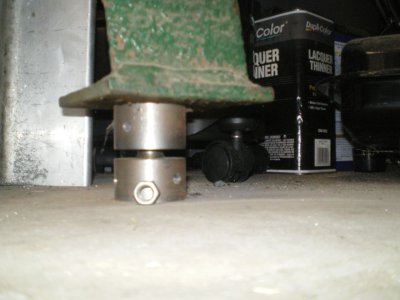Sorry what I was trying to say (not meaning to sound like a jerk) is that it depends on the location a lot. If the floor was poured and laser floated/leveled (we moved into a 300x300' building and the floor was nearly surface plate perfect) a couple piece of conveyer belt may be all that is needed. Most garage floors are sound and simply need leveling feet. Some floors are poured wrong and the top skin is weak requiring some way to keep the machine from digging into it. If the slab was outdoors and poured to drain the lathe may need to be bolted down so it doesn't migrate downhill.
Sometimes the machine needs to be a little higher for operator comfort, so leveling feet with built in spacers are needed. Which was my case.
View attachment 44095
I needed my Jet 12x36 to be a couple inches higher to ease my lower back. So I made these levelers. It just sat on 4 6" pieces of conveyer belt until then and apparently for 30yrs at the previous location. My Jet 9x20's cabinet just sits on the floor even though the manual under "setup and operation" says it must be fastened to the floor and is provided with anchoring tabs and is nice and level (probably luck that).
There are so many considerations for an installation that it is up to the owner to get it right. Often there is a paragraph in the manual on installation, we generally don't bolt them down unless needed, they tend to stay in place.
http://content.wmhtoolgroup.com/manuals/m-321810.pdf is the owners manual I believe and it mentions pads on page 7 though the parts manual
http://content.jettools.com/assets/manuals/321820_man_EN.pdf doesn't seem to list them.
Sorry again for being so curt earlier I didn't realize it until I read your quote, no excuse but I musta been in a hurry.
Steve

